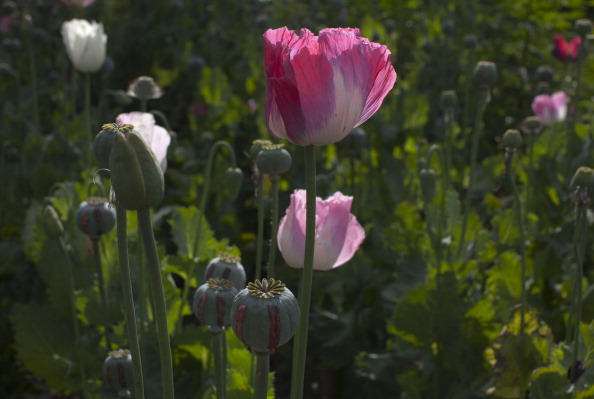
For centuries, the opium poppy has been the source of the useful painkiller morphine and the addictive drug heroin. The flower soon may be reduced to an ornamental plant because scientists have learned how to make morphine in a laboratory dish. This will change everything from drug manufacturing to drug trafficking.
The process involves creating a genetically modified strain of brewer's yeast, Saccharomyces cerevisiae. As yet, no one is known to have created a strain of yeast that makes morphine, but biochemists have created all the steps in the pathway over the last seven years. The last step was published in the journal Nature Chemical Biology this week.
A yeast source for opium could benefit pharmaceutical companies. Morphine is a chemical precursor to drugs such as codeine, although they can already synthesize some drugs that wre derived from opium. Drug regulatory agencies around the world will need to take steps to control this new source for a drug that has historically been an addiction problem.
But drug traffickers might benefit more. While drug companies have access to legally grown and licensed opium, traffickers must deal with lawless areas of the world like Afghanistan, Laos, and Myanmar. Keeping the supply of heroin can be iffy and expensive, since it requires paying farmers, guards, transporters, and many layers of bribes. An easier source of heroin would be useful to them.
A commentary that accompanied the journal article recommended several steps to keep the technology from being misused. These steps include keeping the yeast in secure laboratories and restricting access to the DNA information needed to reproduce the yeast. Other experts in this area say that such restrictions are overkill. Making small batches of morphine might not be hard, but the fermentation process may be difficult enough that commercial quantities of morphine or heroin might be too difficult.
Now that the pathways to creating a yeast that can make morphine have been outlined, researchers believe that it will be a year or so until genetic modification creates such a strain of yeast.
